In the world of high-performance sports, athletes are always on the lookout for ways to gain an edge. Whether it’s through advanced training techniques, cutting-edge recovery methods, or meticulous nutrition plans, the quest for peak performance never really ends for most of us who are really getting after it.
Yoga is one of these tools – one that is both surprisingly effective and commonly disregarded due to social stigmas. This ancient practice has certainly become more widely accepted than it was in the past, but a lot of folks still overlook it. For athletes engaged in sports that demand the most from them – think motocross, endurance racing, surfing, martial arts, etc – yoga can be a total game changer, providing benefits that go far beyond the simple flexibility it’s often credited for. It’s a practice that can strengthen the body in some unique ways as well as sharpen the mind and improve performance in all aspects of life.
commonly disregarded due to social stigmas. This ancient practice has certainly become more widely accepted than it was in the past, but a lot of folks still overlook it. For athletes engaged in sports that demand the most from them – think motocross, endurance racing, surfing, martial arts, etc – yoga can be a total game changer, providing benefits that go far beyond the simple flexibility it’s often credited for. It’s a practice that can strengthen the body in some unique ways as well as sharpen the mind and improve performance in all aspects of life.
Enhanced Flexibility and Range of Motion
So yes, one of the most apparent benefits of yoga is its ability to improve flexibility. For athletes, flexibility isn’t just about being able to touch your toes though – it’s about enhancing your range of motion and also strength throughout that range to be able to execute movements more efficiently and safely. For example, sports like surfing demand fluid and dynamic movements, and motocross requires the ability to shift and balance the body effectively. Yoga poses such as Downward Dog, Pigeon Pose, and Cobra Stretch can open up the tight hips, hamstrings, and shoulders which are common problem areas for athletes.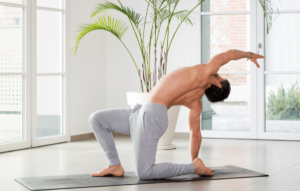
Improved flexibility also plays a critical role in injury prevention. Tight muscles are more prone to strains and tears, especially during high-intensity activities. By incorporating yoga into their routines, athletes can create greater balance in the body, ensuring that no muscle group is overly tight or neglected. This holistic approach can keep them in the game longer.
Strength and Core Stability
Yoga isn’t just about stretching; it’s also an excellent strength-building practice. Many poses, such as Plank, Warrior Series, and Chair Pose, require you to engage multiple muscle groups simultaneously. Unlike traditional strength training, which often isolates specific muscles in only a sagittal plane, yoga develops functional strength that mimics the demands of athletic movements in all planes of movement.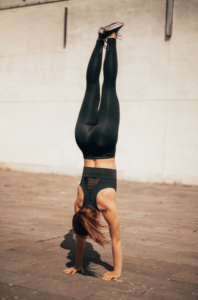
Core and posterior chain stability is another area where yoga shines. A strong core, significantly contributed to by a strong posterior chain, is essential for virtually every sport, from maintaining balance on a surfboard to stabilizing the body during endurance runs. Poses like Boat Pose and Side Plank target the deep core muscles, building the foundation for better athletic performance. Stronger core muscles mean better posture, improved biomechanics, and reduced risk of injury.
Improved Balance and Coordination
For athletes, balance isn’t just a skill – it’s a necessity. Surfers need impeccable balance to stay on their boards, and martial artists rely on extreme coordination to execute precise techniques. Yoga poses like Tree Pose, Eagle Pose, and Half Moon are designed to challenge and improve balance. Over time, these poses enhance proprioception – the body’s ability to sense its position in space.
Improved balance translates to better stability and control, especially during dynamic or unpredictable movements. For motocross riders navigating rough terrain or endurance athletes tackling uneven trails, this can make all the difference between success and serious setbacks.
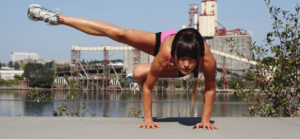
Mental Focus and Mindfulness
Physical performance is of course only part of the equation, or rather, it’s the end result of a bigger equation; the mental game is just as important as the body stuff in sports. Yoga incorporates mindfulness practices that train athletes to stay present and focused. Through breath control (pranayama) and meditation, athletes can develop a heightened sense of awareness and mental clarity.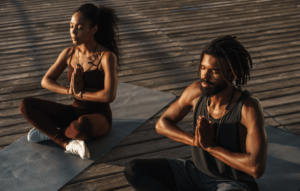
This mental edge is invaluable in high-pressure situations, such as preparing for a race or stepping into the ring. Yoga teaches athletes to remain calm under stress, enabling them to make better decisions and react more effectively. The discipline cultivated on the mat often carries over to competition, where mental resilience can be, and often is, the difference between winning and losing.
Faster Recovery and Injury Prevention
Recovery is another cornerstone of athletic success, and yoga can significantly enhance this process. Many yoga practices are restorative, focusing on gentle stretches and poses that improve circulation and release tension. This helps muscles recover more quickly and reduces post-exercise soreness.
Additionally, yoga’s emphasis on alignment and symmetry can address muscular imbalances, a common cause of overuse injuries. For example, endurance athletes often overdevelop their quadriceps while neglecting their hamstrings, leading to knee issues. Yoga helps restore balance, reducing the likelihood of injury and improving overall biomechanics.
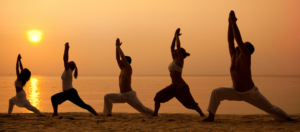
Improved Breathing and Stamina
Breath control is a fundamental component of yoga, and its benefits extend directly to athletic performance. Techniques like diaphragmatic breathing and alternate nostril breathing increase lung capacity and improve oxygen efficiency. For endurance athletes, this can mean greater stamina and less fatigue during long events.
Better breathing also enhances recovery by reducing the body’s stress response. When athletes learn to breathe deeply and consciously, they activate the parasympathetic nervous system, which promotes relaxation and healing. This is particularly useful for martial artists and motocross riders, who often operate in high-adrenaline environments.
Longevity in Sports
Athletic careers, whether professional or recreational, tend to be fundamentally limited by wear and tear on the body. Yoga offers a way to extend these careers by maintaining the body’s resilience over time. The combination of flexibility, strength, and mindfulness keeps athletes agile and less prone to burnout.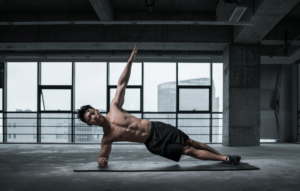
Professional athletes like Kelly Slater and Conor McGregor have credited yoga with helping them stay at the top of their game for years. By integrating yoga into their routines, athletes can sustain peak performance and continue doing what they love for longer.
Practical Tips for Getting Started
For athletes new to yoga, the idea of stepping onto a mat might feel a bit foreign and intimidating. But, yoga doesn’t have to be complex or a whole big time-consuming thing at all to be effective. Here are a few tips:
- Start Small: Begin with 15-20 minute sessions, focusing on areas that feel tight or overworked.
- Choose the Right Style: For strength and flexibility, try Vinyasa or Power Yoga. For recovery, explore Restorative or Yin Yoga.
- Use Online Resources: Platforms like YouTube offer free yoga classes tailored to athletes.
- Be Consistent: Aim for 2-3 sessions per week to see noticeable benefits.
- Listen to Your Body: Yoga is about tuning in to what your body needs, so don’t push through too much pain or discomfort.
Conclusion: A Game-Changing Practice
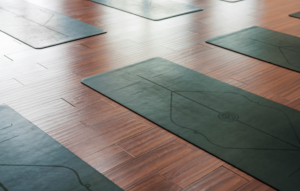 Yoga is so much more than a workout and so much more than simple stretching; it’s a game-changing practice that can elevate athletic performance in every way. From building strength and flexibility to improving focus and recovery, yoga offers a comprehensive approach to becoming stronger and better all around. Whether you’re a surfer chasing barrels, an enduro racer tackling tough trails, or a martial artist perfecting your craft, yoga can be the secret weapon that takes you to the next level. Check out a local class sometime and experience the benefits for yourself – you’ll thank me later.
Yoga is so much more than a workout and so much more than simple stretching; it’s a game-changing practice that can elevate athletic performance in every way. From building strength and flexibility to improving focus and recovery, yoga offers a comprehensive approach to becoming stronger and better all around. Whether you’re a surfer chasing barrels, an enduro racer tackling tough trails, or a martial artist perfecting your craft, yoga can be the secret weapon that takes you to the next level. Check out a local class sometime and experience the benefits for yourself – you’ll thank me later.







